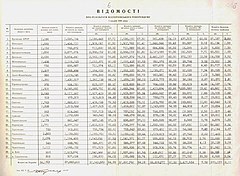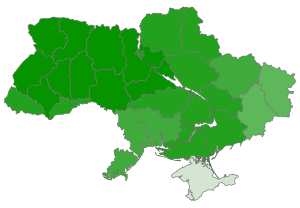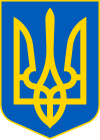A referendum on the Act of Declaration of Independence was held in Ukraine on 1 December 1991.[1] An overwhelming majority of 92.3% of voters approved the declaration of independence made by the Verkhovna Rada on 24 August 1991.
Voters were asked "Do you support the Act of Declaration of Independence of Ukraine?"[2] The text of the Declaration was included as a preamble to the question. The referendum was called by the Parliament of Ukraine to confirm the Act of Independence, which was adopted by the Parliament on 24 August 1991.[3] Citizens of Ukraine expressed overwhelming support for independence. In the referendum, 31,891,742 registered voters (or 84.18% of the electorate) took part, and among them 28,804,071 (or 92.3%) voted "Yes".[2]
On the same day, a presidential election took place. In the month up to the presidential election, all six candidates campaigned across Ukraine in favour of independence from the Soviet Union, and a "Yes" vote in the referendum. Leonid Kravchuk, the parliament chairman and de facto head of state, was elected to serve as the first President of Ukraine.[4]
From 2 December 1991 onwards, Ukraine was globally recognized by other countries as an independent state.[5][6][7] Also on 2 December, the President of the Russian SFSR Boris Yeltsin recognized Ukraine as independent.[8][9][10][11] In a telegram of congratulations Soviet President Mikhail Gorbachev sent to Kravchuk soon after the referendum, Gorbachev included his hopes for close Ukrainian cooperation and understanding in "the formation of a union of sovereign states".[12]
Ukraine was the second-most powerful republic in the Soviet Union both economically and politically (behind Russia), and its secession ended any realistic chance of Gorbachev keeping the USSR together. By December 1991 all former Soviet Republics except the RSFSR[13] and the Kazakh SSR[13] had formally seceded from the Union.[14] A week after his election, Kravchuk joined with Yeltsin and Belarusian leader Stanislav Shushkevich in signing the Belavezha Accords, which declared that the Soviet Union had ceased to exist.[15] The USSR officially dissolved on 26 December.[16]




